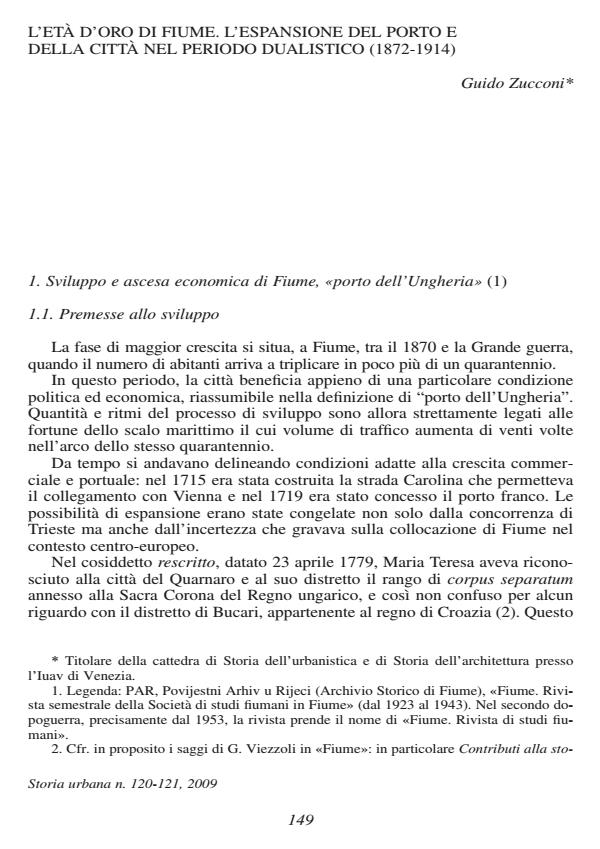L'età d'oro di Fiume. L'espansione del porto e della città nel periodo dualistico (1872-1914)
Titolo Rivista STORIA URBANA
Autori/Curatori Guido Zucconi
Anno di pubblicazione 2009 Fascicolo 2008/120
Lingua Italiano Numero pagine 16 P. 149-164 Dimensione file 3298 KB
DOI 10.3280/SU2008-120007
Il DOI è il codice a barre della proprietà intellettuale: per saperne di più
clicca qui
Qui sotto puoi vedere in anteprima la prima pagina di questo articolo.
Se questo articolo ti interessa, lo puoi acquistare (e scaricare in formato pdf) seguendo le facili indicazioni per acquistare il download credit. Acquista Download Credits per scaricare questo Articolo in formato PDF

FrancoAngeli è membro della Publishers International Linking Association, Inc (PILA)associazione indipendente e non profit per facilitare (attraverso i servizi tecnologici implementati da CrossRef.org) l’accesso degli studiosi ai contenuti digitali nelle pubblicazioni professionali e scientifiche
The golden age of Fiume: Urban and Maritime Expansion in the "Dualist" Period (1872-1914) - There is no better symbol of the strivings of Fiume’s cosmopolitan ruling class than the waterfront in the so-called dualistic period (1872-1914), its "Golden Age". Although Fiume started out with a small population and volume of trade, it was able to exploit the opening of new trading routes in the Mediterranean Sea as well as new rail connections. The Suez Canal had been opened and Fiume was chosen as the "port of Hungary". Thus a new harbor was created and linked through new railroad connection to Croatia and Hungary inland. Mayor Ciotta played a leading role in this climate of economic upheaval during his twenty-year tenure. Fiume’s architecture can serve as an index of Fiume’s transition from small to large scale and from a local to an international perspective. We can see this in the waterfront blocks - the residential buildings, the company headquarters, and the public buildings, such as the new grand Opera theatre, all of which epitomize the passage into a new urban panorama.
Guido Zucconi, L'età d'oro di Fiume. L'espansione del porto e della città nel periodo dualistico (1872-1914) in "STORIA URBANA " 120/2008, pp 149-164, DOI: 10.3280/SU2008-120007